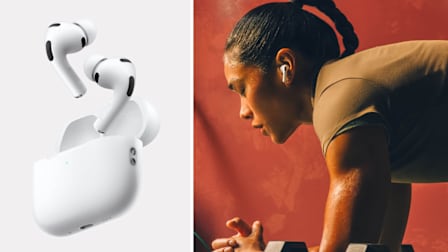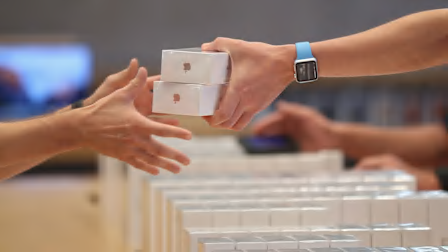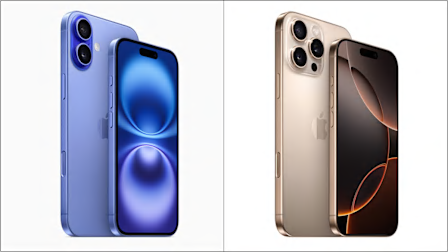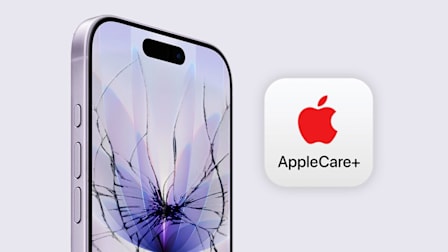The iPhone 17 Is the True Star of Apple's New Phone Lineup
The super slim iPhone Air got the buzz, along with the bright orange finish on the 17 Pro and 17 Pro Max, but the iPhone 17 delivers the best value.
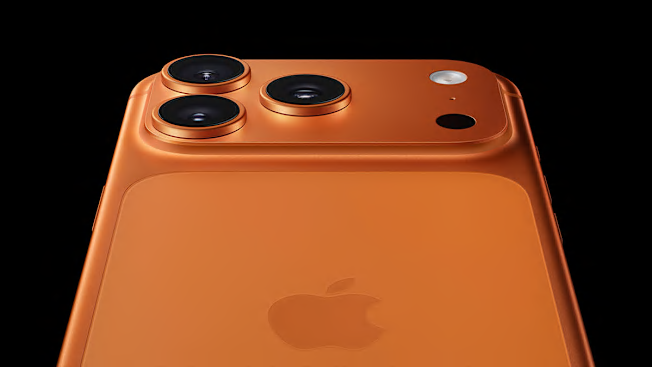
Apple’s new iPhone 17 lineup has officially arrived in stores. Most of the changes this year are fairly subtle—think a refreshed selfie camera, tougher Ceramic Shield 2 glass, and a bold orange finish option for the Pro models. The standout, though, is a whole new device: the ultra-slim iPhone Air, which takes the place of last year’s iPhone 16 Plus.
And yet, it’s hard to overlook all that the humble iPhone 17 base model now has to offer.
iPhone Air ($999)
The $999 iPhone Air marks one of the first major iPhone redesigns in years. At 5.8 ounces and less than a quarter-inch thick, it’s the thinnest-ever iPhone.
The slim profile (about the thickness of three quarters stacked together) feels strikingly different from the iPhones most of us are used to holding all day long. By comparison, the 17 Pro feels like a brick, and even the relatively petite iPhone 17 seems chunky. And once I got over my initial fear of snapping the thing in half—in fact, Apple boldly claims the Air is more durable than any previous iPhone—I loved the new look and feel.
Of course, the novelty does wear off. But even once the wow factor had waned, the Air was still less cumbersome to hold and easier to tuck away in a bag or pocket, while still sporting a large 6.5-inch display.
(If you’re used to protecting your phone in a case, Apple does sell a $39 barely-there bumper for the Air, which I tried and liked. But you’ll be adding some heft to a device whose main selling point is its slimness.)
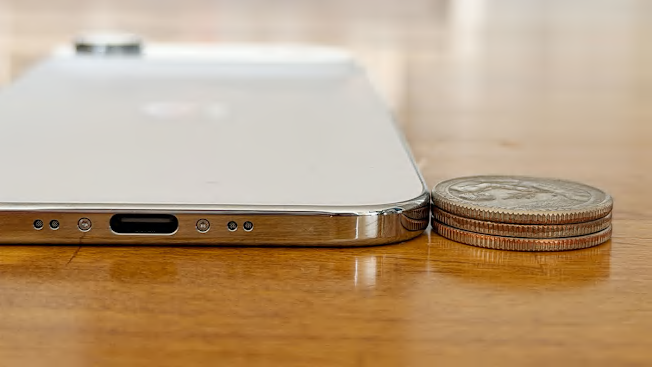
Photo: Courtney Lindwall/Consumer Reports Photo: Courtney Lindwall/Consumer Reports
To get that sleek profile, you have to accept a few trade-offs, though.
The Air has just one 48-megapixel rear camera, so you miss out on the additional ultrawide camera on the other iPhone 17 models, which allows for the expansive 0.5x zoom and up-close macro photography. There’s also no additional telephoto (available on the Pros) to help capture crisp long-distance images while at, say, a concert or your kid’s soccer game. The Air loses other Pro camera features, too, like Cinematic Mode for video.
Does that mean the iPhone Air’s camera is mediocre? Not necessarily—especially for most casual users. CR’s camera experts will put the Air through a slew of tests and report back, but I was able to take what appeared to my untrained eye as crisp, richly colored shots.
The Air also has only one speaker—built into the top earpiece—rather than the dual-speaker setup of other iPhone 17 models. I played some music at full volume and wasn’t disappointed by the sound quality, but the more attuned ears of CR’s testers might disagree.
Battery life may be another concern. Apple advertises “all-day” use, but the Air’s slim body inevitably holds a smaller battery than the bulkier models. In my case, it didn’t drain unusually quickly, but heavy users might see different results. (CR will verify performance in official testing.) For extra peace of mind, Apple sells a $100 MagSafe battery pack that snaps onto the back.
Despite these relatively minor drawbacks, the razor-thin iPhone Air could be for you if you like to geek out on new tech or simply delight in the sleek design.
iPhone 17 ($799)
The Air might have a bit more star power, but the iPhone 17 still feels like the best option for most people, especially as the gap between the standard and Pro models continues to narrow.
The $799 iPhone 17 now includes Apple’s ProMotion display, bringing a faster 120 Hz refresh rate to the standard model for the first time. This upgrade makes everyday scrolling feel more fluid, while also improving the smoothness of video playback and gaming. It isn’t dramatic, but I indulged in an hour (or so...) of TikTok scrolling and noticed a subtle difference. The iPhone 17 also inherits the Always On display, which dims the lock screen while still showing the time, widgets, and notifications—a convenient way to glance at info without tapping the screen.
The iPhone 17 has a slightly bigger display than last year’s model—the same 6.3 inches as the 17 Pro—and starts with 256 GB of storage, up from 128 GB on the iPhone 16. This means even fewer people have reason to fork over an extra $300 for the 17 Pro or $400 for the 17 Pro Max.
The dual-rear camera system is also improved. It has the same 48-megapixel main rear camera and now a 48-megapixel ultrawide (up from 12 megapixels), as well as the new "Center Stage" selfie camera (available across all the new models) that automatically widens the frame when it detects more people at your side.
When I tried it out during an afternoon picnic, it worked well, though it sometimes took a beat to change the frame size. I snapped the group picture below while holding the iPhone 17 vertically, and later, the model even managed to expand the frame when my friend’s dog entered the shot.

Photo: Courtney Lindwall/Consumer Reports Photo: Courtney Lindwall/Consumer Reports
The iPhone 17 has the new Ceramic Shield 2 glass on the front, which Apple claims has three times the scratch resistance of the previous generation. All the iPhones I reviewed did indeed remain scratch-free for the week I lugged them around case-free. But CR will put each model through more rigorous scratch testing in our labs, so we’ll report back on the results.
Also worth mentioning: I really like the cheerful but understated iPhone 17 color palette, which includes lavender, sage green, mist blue, white, and black.
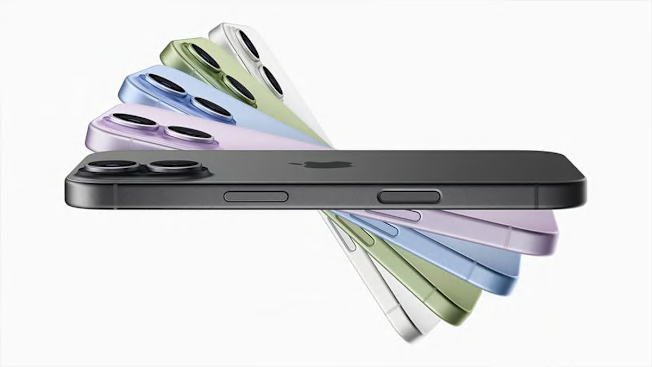
Photo: Apple Photo: Apple
iPhone 17 Pro ($1,099) and Pro Max ($1,199)
The splashy iPhone Air and improved iPhone 17 make the upgrades on the Pro and larger Pro Max seem particularly incremental, even as the Pro’s price inched up $100. Apple kept the display sizes the same (6.3 and 6.9 inches) but added the new A19 Pro chip, which is more capable of tackling Apple Intelligence features as they roll out, Apple says.
In a surprising move, the Pro and Pro Max returned to an aluminum frame after having premium titanium frames since the iPhone 15 Pro. The change takes away another distinguishing "Pro-only" factor, but the redesign allows for more efficient cooling and better battery life, Apple says. (We’ll verify battery life claims in our labs.)
The triple-rear camera system on the Pros has also been tweaked. As you’ll likely notice, the camera layout is rearranged—a camera "plateau," instead of a bump, now spans the width of the back of the phone. This change didn’t present any issues during my trial run, but the redesign could possibly affect durability. (CR testers will put each new iPhone through rigorous scratch-resistance and drop testing.)
Functionally, though, the two Pros now sport a higher-resolution 48-megapixel telephoto with 4x optical zoom, replacing the 12-megapixel telephoto with 5x optical zoom on the previous generation. It may seem like you lose some optical zoom range, but the higher-resolution sensor actually allows you to achieve a sharper image while taking faraway shots through digital cropping, Apple says. As in years past, the Pros are the phones to buy if you want your iPhone to have the most capable and versatile camera possible.
To my untrained eye, my shots of a neighbor’s dahlia blooms—taken at both 1x and 4x—look crisp, and nearly as beautiful as the flowers do in person.

Photo: Courtney Lindwall/Consumer Reports Photo: Courtney Lindwall/Consumer Reports
And the level of detail in this shot of a church’s stained glass windows (taken from down the street, at 8x zoom) is also impressive.

Photo: Courtney Lindwall/Consumer Reports Photo: Courtney Lindwall/Consumer Reports
The Pros come in a new set of colors, too: silver, cosmic orange, and deep blue. (Fine, I’ll say it: I think the orange is a bit garish, but lots of folks seem to love it.) Either way, the fact that the colors are among the most buzzed-about additions to this year’s Pro models tells you that the changes are fairly minimal.
CR's Take
We don’t recommend rushing out to buy the latest smartphone unless you truly need an upgrade. But if you are in the market for a new device, the iPhone 17 is likely the model to buy. It offers a number of features formerly exclusive to the Pros, like ProMotion display and 256 GB of starting storage. Plus, you get a slightly larger 6.3-inch display and access to all the same Apple Intelligence features. More to the point, the price held steady at $800, while the iPhone 17 Pro got a $100 bump to $1,100.
The iPhone Air could also be a great fit for anyone who prioritizes design and novelty—and hates lugging around a heavy phone. But know that the slim design comes with some performance trade-offs.
CR members can access full test results in the coming weeks for the iPhone Air and three new iPhone 17 models, which will cover metrics like durability, scratch resistance, and battery life.





























